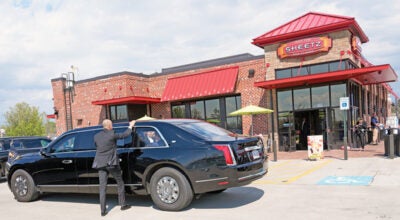St. Mary’s donates LIFENET equipment to Lawrence County EMS
Published 10:00 am Thursday, May 19, 2011
When a person is having a heart attack, every second counts.
St. Mary’s Medical Center understands this and offered a way to help area Emergency Medical Services cut down the number of seconds from the time help arrives until the time life-saving treatment begins.
“St. Mary’s Medical Center has invested more than $40,000 to upgrade heart monitoring equipment in local ambulances,” according to a press release from St. Mary’s.
The Huntington Clinical Foundation contributed $7,500 to the cost of the project through St. Mary’s Medical Center Foundation.
The equipment, the LIFENET system, allows information to go from the ambulance to the hospital in seconds.
“The LIFENET system is a system we use that communicates from the EMS and the field first responders,” said Tammy Walls, of South Point, St. Mary’s emergency room clinical manager.
“If a patient is having chest pains, they can hook them up to an EKG to show if they are having a heart attack.” This information can be immediately available to the emergency room.
Thirty-eight LIFENET systems were donated to Cabell County EMS, Wayne County EMS, the Kenova Fire Department EMS, and the Prichard Volunteer Fire Department in West Virginia and the Lawrence County EMS in Ohio.
Determining the patient’s condition on the way to the hospital allows the cardiac catherization lab and staff to be ready for the patient when the ambulance reaches the hospital, shaving off the time a patient would have had to wait to receive treatment.
Walls said the national standard for door-to-balloon time, the time it takes a patient to get from the emergency room to the catherization lab, is 90 minutes, but with this equipment, the time has gone down to 37 minutes.
“It’s very helpful,” Walls said. “You’ve heard the saying time is muscle. The less time you spend getting them ready to go the lab, the more heart muscle they’ll save.”
Time is precious when dealing with a heart attack.
“The sooner they get to the cath lab and open that artery up, the better,” Walls said. “Every minute they wait to get that artery opened up, the great chance it’s lost.“





